Where the Turia river once flowed, the Turia Gardens now comprise a 170,000-square-meter expanse , with sports facilities, bike paths, exercise stations, & lush gardens superimposed upon the dry river bed. Its rambling beauty is revealed on a stroll eastward, along distinctive sections that wrap around the heart of old Valencia’s serpentine streets and plazas. An area visually rich with Baroque, Romanesque, Gothic and Mudejar architecture. Architect Santiago Calatrava’s City of Arts & Sciences will be the stunning finale to our discovery of ‘the Turia.’
We continue along now, taking up where my feature on the Turia Gardens – Green Zone ended at Santiago Calatrava’s Exposition Bridge. The Turia walkway goes on, after wrapping around the lovely old quarter of Valencia,
past Bofill’s Modernist landscape design adjacent to the music palace.
Soon we come upon a densely planted landscape, fragrant with swathes of herbs and bosks of trees which will braid together as they reach maturity in the undulating grounds of a vast complex – the City of Arts & Sciences, designed by architect/engineer Santiago Calatrava.
A small footbridge bears the mark of a Calatrava design, Valencia’s native son.
At last the ‘City‘s’ true entryway comes into view: Calatrava designed L’Umbracle to conceal. Its form stands atop a parking garage. Calatrava also created sculptural forms sheated in mosaics to house the elevators and mask air conditioning units. (In the photo, the form appears in the distance.)
A word derived from Latin, l’umbracle is a sort of shade house. In this case, one that captures the imagination. An innovative, open-air public space, the 18-meter-high structure possesses an intrinsic clarity of light for the trove of plants that grow within.
There are terraces for relaxation and receptions: Allees of palms, ornamental vines, and aromatic species such as shrubs native to the region commingle with bitter orange trees, rockrose, plumbago, and buddleja.
City of Arts & Sciences Palace of the Arts © Alice Joyce
The spectacle of the City of Arts and Sciences looms like a dream: Calatrava’s gleaming white, organic architectural forms in glass, steel and concrete emphatically proclaiming Valencia’s place in the new millennium. Situated amid a 7,000 square-meter green space and sculpture park, completed in 2007, the ‘City’ arises in a formerly depressed industrial area a few kilometers from the sea.
Above: The Palace of the Arts offers a head-turning concept, with pencil cypresses breaking the surface of the pale blue water encircling the building.
Calatrava’s stunning design of the City presents a modern-day mecca of art and technology: In the Umbracle and L’Hemisferic; the emblematic Palau de les Arts – Palace of the Arts; and the Museu de les Ciencies Principe Felipe – Prince Felipe Science Museum. A building designed by Felix Candela, L’Oceanografic, a marine park, completes the complex.
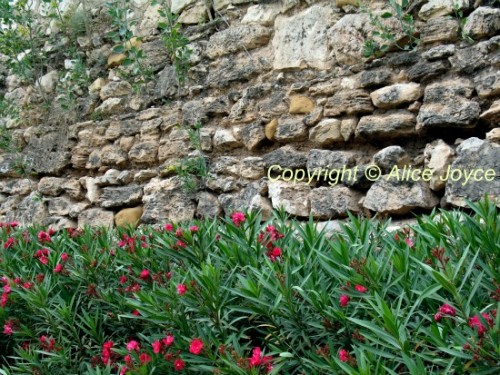
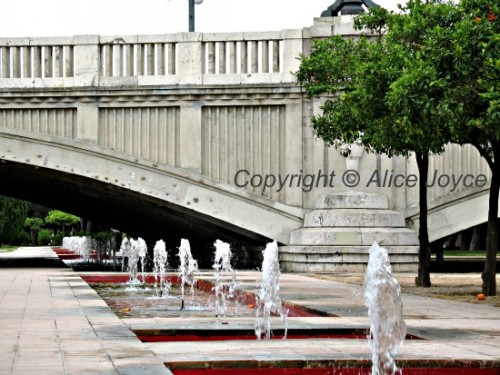
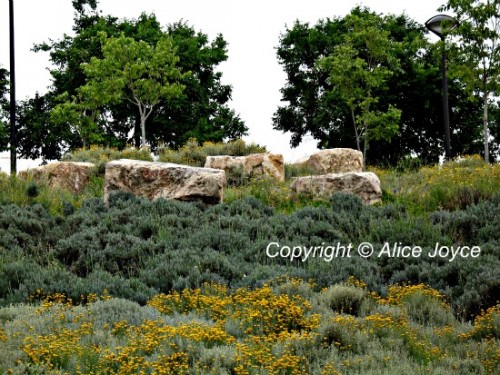
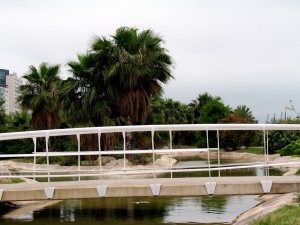
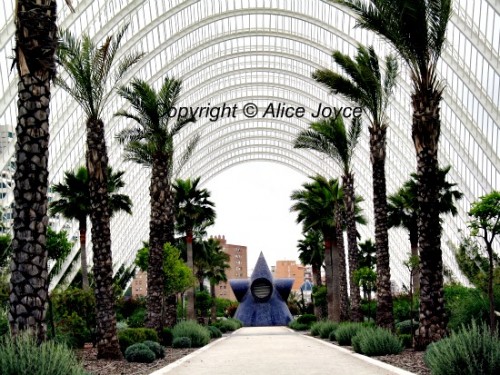
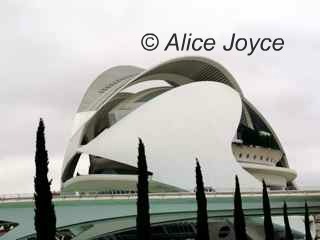
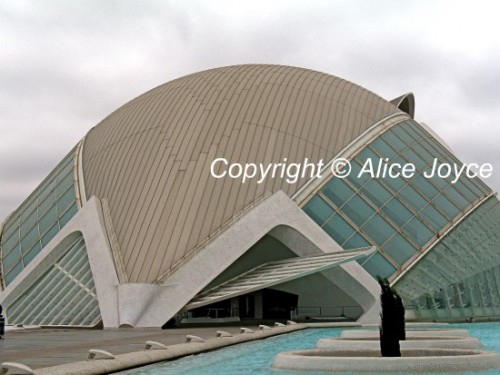
Dear Alice, How absolutely amazing. I love how you say that the herbs and trees ‘will braid together’. No-one who has seen this can suggest that there is little truly innovative happening today in the worlds of architecture and landscape.
Wow…the architectural structures in your photos are truly striking! Beautiful how they blend with the surrounding environment. Amazing, Alice!
I must admit to being rather mesmerized by L’Umbracle. I’m not usually much for modern architecture, but the Palace of the Arts, perhaps due to its gentle curves, is actually very pleasing to the eye. Even though Valencia is clearly rich in history, there’s no question that it is also squarely present in the 21st Century! I hope to see it in person myself one day.
Dear Edith,
It’s awfully exciting to see a newly planted landscape, while looking forward to returning once it has matured. Calatrava is so multi-faceted that he had a say in everything, from configuring the landscape and choosing plants to creating the magnificent buildings.
Kimberly,
I hope that my garden/travel ‘proselytizing’ will be enriching .. and fun, too!
CVF,
It’s impressive that a city such as Valencia can treasure its ancient buildings and artifacts, and at the same time, move forward without hesitation. Hopefully you’ll find yourself in Spain one day and can add Valencia to the itinerary.
Alice, those architectural designs are amazing. I am glad you called them “organic,” for that is exactly how it feels to look at them: Organic with modern materials. I can only imagine what a statement about the city of Valencia they make when one is standing in their presence.
Sometimes I wish that US would integrate some of these design techniques of hiding air conditioner units and other unsightly features.
Beautiful structures and such an achievement to keep it all looking so wonderful.
Meredith,
Calatrava’s stunning buildings have an amazing sensory impact that must touch upon our connection to the organic shapes.
I found it fascinating to learn of Calatrava extensive involvement with the plantings and landscape, equal to his expertise in engineering and architectural design.
Rosey,
The sculptures – i.e. forms hiding the air-conditioning, etc., are yet another facet of Calatrava’s talent – a real Renaissance man!
These are such great photos, Alice. The Palace of the Arts, to me, seems like crisp, freshly washed linen on the line blowing in the wind. Simply spectacular.
Karen
Your artistry comes through in the words you’ve chosen to describe the Arts building. Conjures up a lovely image!
That photograph is unbelievable – I keep looking at it to work out what is real and what reflection. Fabulously captured, thank you! The Spanish are gutsy architects, from Gaudi onwards!
Marian,
Thanks for stopping by. Glad you enjoyed the photograph. I’ll never forget the experience of walking the Turia, and arriving at ‘the City.’